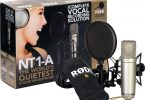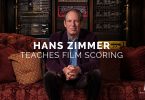Tips on Documentary Editing in Avid
If you want to learn how to edit a documentary in Avid Media Composer, then there’s few better teachers to spend time with than PBS Frontline editor Steve Audette A.C.E. He’s recently been sharing some great tips and work arounds when editing in Avid Media Composer. If you like what Steve has to say then you absolutely must check out these previous posts, especially this early masterclass on his documentary editing process.
In this first video you can sit over Steve’s shoulder and watch him put together a first cut of a sequence.
The producing team has selected the best bites to tell this part of the story, and to help build the narrative, short narration bridges have also been written in. That document is then handed to me for assembly. In this case I am showing Act three of the current FRONTLINE documentary.
There’s another little extra tip from Steve in the comments section of the Vimeo page, on how to get an additional source monitor for audio by “Option or Alt double click on a clip in the bin will bring it up in a Mini Composer Window.”
I also asked: “At 2 minutes, is that zoomed out timeline the full work in progress of the show? With the assembled Act 3 on the end? How long is your typical first assembly, vs the final cut?”
Yes! At the end is the full program as it begins to be flushed out into a film. Act three is the long tail that is just narration and sound bites. Generally I build out scene by scene as I cut, but we knew our act three was going to be very long so rather than build out in full, fine cutting each scene or sequence that would be in act three, we just plotted out the story points to the end. Watching all that back helped us know where we could trim this big act down so that it would be in round with the rest of the 55 min film. I’d say we needed to cut 8 mins out of that last bit bringing it down to about ten minutes.
As we normally fine-cut about 5 minutes a day — building as we go along — that assembly process saved me a couple of long days of cutting that would never had made it to the final program.
I love broadcast air dates they make one focus.
In this second video Steve provides a handy work around to the lack of Script Sync in Media Composer 8, by creating them in version 7 (or older) and then importing the bin back into MC8.
Lastly, if all of this has inspired you to dive into a career in the creative industries, then this talk from Steve at the CDIA Commencement speech in 2010 will give you his 10 Commandments of a Creative Professional to help you get started. It’s a fantastic talk and an inspirational one, for anyone, at any stage of their creative career, with a ton of practical tips you can apply – today.
Let nothing stop you… think like Yoda. Do or do not, there is no thing as try.
If you’re about to dive into freelancing in a creative career, then check out my 100 page practical primer on How To Be a Freelance Creative. If you want to learn the fundamentals of documentary editing there is no better online course than, Inside The Edit. You can also save 10% on the course with the promo code “jonnyITE2016“.
Here’s Steve’s 10 Commandments, which will make a lot more sense if you watch the talk!
- Let nothing stop you
- Become invaluable
- Honour your sponsors
- Share your knowledge
- Keep your promises
- It’s not about you, it’s about your clients
- Actively pursue experience through knowledge and learning
- Building ‘The Myth’
- You can only say no, once
- Stay in the game and be ready for opportunity
Insights on Editing a Documentary
In this further timelapse from Steve’s edit suite you can watch him replace all of the scratch voiceover with the real deal, in one of his final projects. If you’re looking to record your own voice over in your edit suite then check out this post on The Best Microphone For Recording Voice Over.
UPDATE
In these further videos from Steve you can see how his timelines progress as the weeks go by and the edit develops. As well as watch him replace scratch VO with the real deal once more.
In this collection of PBS documentary prologues, from show’s that Steve has edited, you can see what it takes to really hook an audience into the story and keep them engaged.
Mohamed Abdelfattah asked Steve “What kind of process goes into formulating these prologues? Are there any standards or parameters for how it’s constructed? The arrangement of soundbites, selection of b-roll, etc?”
Overall the prologue’s mission is to captivate an audience. Most viewers are coming to a documentary because they already have an interest in the subject matter. These prologues are designed to energise that knowledgeable viewer. The short form has to be compelling, up-tempo in terms of cutting, and maybe a bite or two that is outside the generally known content of the subject, that will let the viewer know they are in for some good stuff. Even if they don’t agree with the position of the content. It is a tease, not a promise. The promise is in the full documentary.
In this short clip from Steve you can hear why he thinks that music is the lady in the red dress, and why that’s good and bad. And in the next clip you can hear Steve’s thoughts on choosing an editor.
Inside the Process of Editing a Documentary
In this Art of The Cut interview, editor Steve Hullfish chats with Steve Audette on his process of crafting a documentary for Frontline, in this particular case it’s the show ‘League of Denial’ about the NFL’s denial on player concussions. It’s a fantastic article, with step-by-step workflow details and images as well as some great little snippets of video that really highlight the points that the ‘Steves’ make in the flow of their conversation.
HULLFISH: One of the things you use a lot is visual metaphors, buildings to stand in for institutions… various shots that the viewer needs to recognize as being representative, not literal.
AUDETTE: That’s actually a very important point. I try to never underestimate my viewers. In fact, one of the signs we have in our edit room is “Speak to peers.” When we’re cutting that kind of stuff we say, “Let’s not make it boring for them, but at the same time let’s make it visually interesting and have action to keep the pace up.
I’m always trying to make sure that I am making a visual environment that is compelling as the bed of the story. But for me, the audio is the story. The sound effects and sound design work that I do is an attempt to create a 3D world in which that story can live. It’s the only element that allows the universe to lift off the 2D world of the screen. So that narrative is being held up by a bed of beautiful stereoscopic sound and then on top of that are images that are compelling and cut well so that the mind’s eye can be drawn into the story. It’s all about details, every image is thought about and presented in a way that is consistent in the narrative and is consistent with the story we’re trying to tell.
Twitter Tips from @Stevecutsdocs
First thing I do when building a timeline is this! https://t.co/Oaiz9SVqyU #Hattip @schiffty though I modify the Eq a bit with less rolloff
— Steve Audette, ACE (@stevecutsdocs) November 29, 2015
In these tweets from Steve you can pick up some further tips and tricks when it comes to getting the most out of Avid and keeping your project on track.
.@frontlinepbs #documentary edit opens up. Time to organize the @avid @MediaComposer #postchat pic.twitter.com/ET5xcQIZar
— Steve Audette, ACE (@stevecutsdocs) February 23, 2016
.@Avid @MediaComposer users show your keyboard-layouts for #ScriptSyncNOW #PhraseFindNOW #postdontstop #postchat pic.twitter.com/np0tgzEvEu
— Steve Audette, ACE (@stevecutsdocs) March 4, 2016
WEEK 2 @frontlinepbs #timelinetuesday @Avid @MediaComposer #postchat almost 22 min cut. @ACEFilmEditors pic.twitter.com/KZwfgX9nlP
— Steve Audette, ACE (@stevecutsdocs) March 1, 2016
UPDATE – More Tips
Checking over the script of this @frontlinepbs documentary on #ISIS trying to find 3 extra mins to cut out. @m_wiser pic.twitter.com/2hZ8SnXVJW
— Steve Audette, ACE (@stevecutsdocs) April 22, 2016
@stevecutsdocs @frontlinepbs @m_wiser
Ha! Do this too. Best things to cut always end up being when we overeducate on the backstory. 😉— Chris Bové (@heybove) April 22, 2016
I look for repetitive bites or even a bit of a scene that can be trimmed. https://t.co/2Angji0yhc
— Steve Audette, ACE (@stevecutsdocs) April 22, 2016





